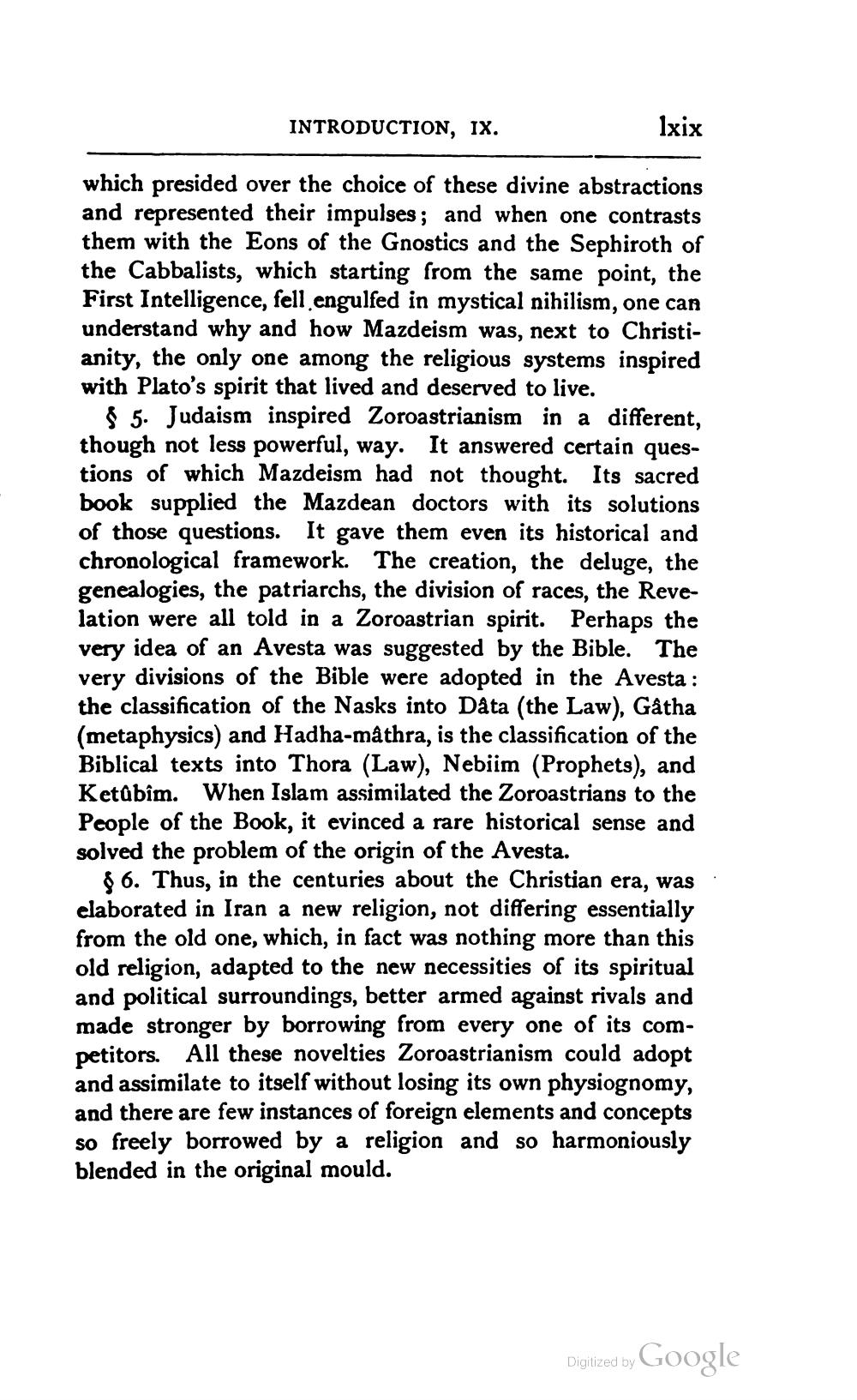________________
INTRODUCTION, IX.
which presided over the choice of these divine abstractions and represented their impulses; and when one contrasts them with the Eons of the Gnostics and the Sephiroth of the Cabbalists, which starting from the same point, the First Intelligence, fell engulfed in mystical nihilism, one can understand why and how Mazdeism was, next to Christianity, the only one among the religious systems inspired with Plato's spirit that lived and deserved to live.
lxix
5. Judaism inspired Zoroastrianism in a different, though not less powerful, way. It answered certain questions of which Mazdeism had not thought. Its sacred book supplied the Mazdean doctors with its solutions of those questions. It gave them even its historical and chronological framework. The creation, the deluge, the genealogies, the patriarchs, the division of races, the Revelation were all told in a Zoroastrian spirit. Perhaps the very idea of an Avesta was suggested by the Bible. The very divisions of the Bible were adopted in the Avesta: the classification of the Nasks into Dâta (the Law), Gâtha (metaphysics) and Hadha-mâthra, is the classification of the Biblical texts into Thora (Law), Nebiim (Prophets), and Ketûbîm. When Islam assimilated the Zoroastrians to the People of the Book, it evinced a rare historical sense and solved the problem of the origin of the Avesta.
§ 6. Thus, in the centuries about the Christian era, was elaborated in Iran a new religion, not differing essentially from the old one, which, in fact was nothing more than this old religion, adapted to the new necessities of its spiritual and political surroundings, better armed against rivals and made stronger by borrowing from every one of its competitors. All these novelties Zoroastrianism could adopt and assimilate to itself without losing its own physiognomy, and there are few instances of foreign elements and concepts so freely borrowed by a religion and so harmoniously blended in the original mould.
Digitized by
Google




